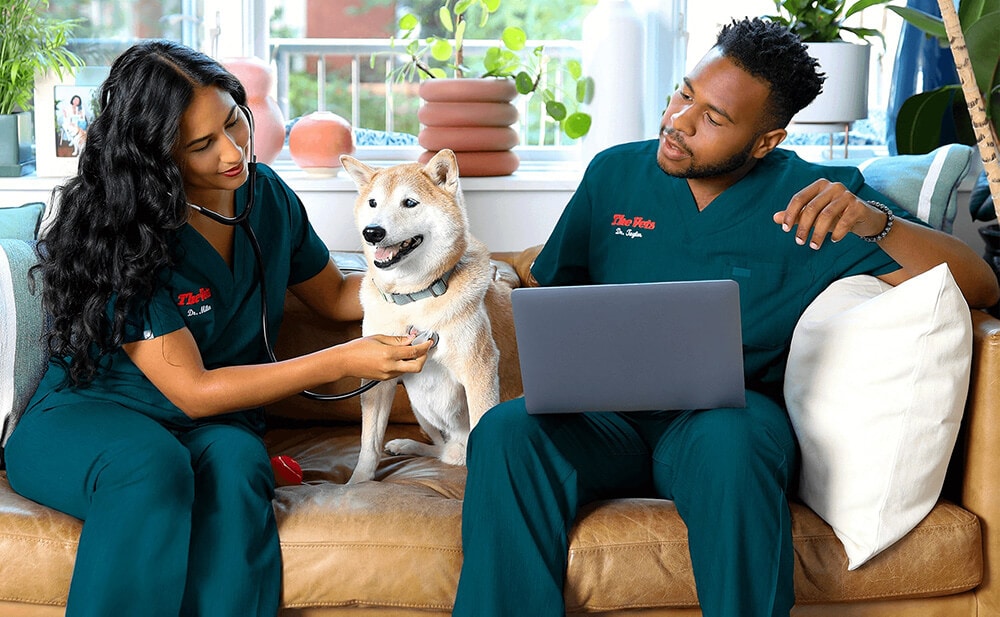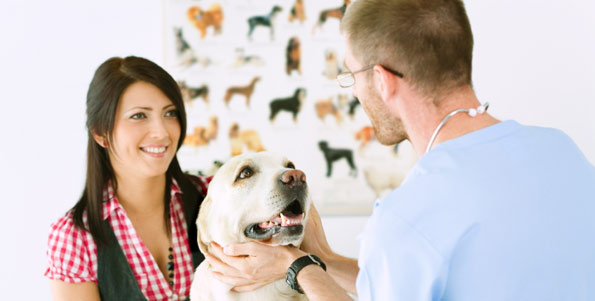Vet Advice on Healing and Care After tplo surgery for dogs
Vet Advice on Healing and Care After tplo surgery for dogs
Blog Article
Everything About Veterinarian Surgical Treatment: Recognizing the Value of Specialist Take Care Of Your Family pets
Vet surgical treatment is an important component of family pet medical care. It encompasses various procedures, from routine elective surgical treatments to urgent treatments. Recognizing the ins and outs of these surgical treatments can help animal owners make notified decisions. The prep work, implementation, and recovery stages are vital for making certain the health of animals. With correct knowledge, proprietors can browse the complexities of vet care. What elements should be thought about before a family pet goes through surgical procedure?
Kinds Of Veterinarian Surgeries
When a family pet needs surgical treatment, understanding the different kinds of veterinarian surgical procedures can assist animal proprietors make educated choices. Vet surgical treatments can be broadly categorized right into 3 main types: elective, immediate, and emergency situation surgical treatments. Elective surgeries, such as spaying or neutering, are intended procedures that are not immediately deadly. Urgent surgical procedures, like those for foreign body removal, must be executed quickly but are not dangerous in the minute. Emergency situation surgical procedures, such as those dealing with severe trauma or internal bleeding, are critical and need instant attention.Additionally, surgeries can differ in intricacy, ranging from minimally invasive laparoscopic procedures to more extensive open surgical procedures. Each sort of surgical procedure lugs its own threats and healing procedures. Recognizing these groups permits pet owners to take part in meaningful discussions with vets, bring about far better end results for their precious family pets.
Getting ready for Your Family pet's Surgical procedure
Getting ready for a family pet's surgery includes a detailed list to assure all basics are covered. Reliable communication with the veterinarian is vital for recognizing the procedure and any type of necessary pre-operative steps - tplo surgery. Additionally, having clear post-operative care guidelines will certainly aid owners offer the most effective assistance for their recovering family pets
Pre-Surgery Checklist Basics
Guaranteeing a smooth medical experience for an animal requires careful prep work and focus to information. A pre-surgery list is crucial for pet dog owners to adhere to. Verifying the arranged surgery date and time is vital. Owners need to also validate that their family pet has actually fasted according to the vet's directions, usually for 8-12 hours prior to surgery. Collecting needed medical records, including vaccination history, is necessary for the vet's testimonial. It is likewise recommended to prepare a comfy area at home for the animal's healing after surgical treatment. Proprietors ought to have a strategy for transportation to and from the veterinary center, making sure that the animal is safe and secure and comfy throughout the trip. Adhering to these steps can greatly enhance the surgical experience.
Communicating With Your Vet

Effective communication with the vet is crucial for an effective surgical experience for animals. Owners should be prepared to review their pet dog's case history, including any pre-existing problems, medicines, and allergies. This information assists the vet assess threats and customize the surgical plan as necessary. Additionally, family pet owners need to ask concerns relating to the treatment, anesthesia, and anticipated results to guarantee they completely understand the procedure. Clearing up any questions can relieve anxiety for both the family pet and the owner. It is also vital to communicate any behavior adjustments or concerns observed in the pet dog leading up to the surgical treatment. Eventually, clear discussion cultivates trust fund and collaboration, ensuring that family pets receive the most effective possible care throughout their medical journey.
Post-Operative Treatment Instructions
After reviewing the medical procedure with the vet, pet dog owners ought to concentrate on post-operative treatment guidelines to assist in a smooth recovery for their pets. These guidelines normally consist of monitoring the medical site for indicators of infection, such as redness or discharge. Family pets may need to be kept calm and constrained to avoid excessive motion that can disrupt healing. Pain administration is essential, so owners should follow the vet's guidance on carrying out medicines. Additionally, dietary limitations might be recommended to prevent intestinal trouble. Routine follow-up consultations are very important to guarantee correct healing and resolve any type of concerns. By sticking to these post-operative treatment guidelines, family pet owners can greatly contribute to their pet's healing and general wellness.
The Surgery Explained
The medical process for family pets encompasses important steps that ensure their safety and security and recuperation. Pre-surgery prep work are important for decreasing risks, while post-operative treatment standards play an important function in advertising healing. Understanding these components assists family pet owners browse the surgical experience much more efficiently.
Pre-Surgery Preparations
Before a family pet undergoes surgical treatment, numerous essential prep work need to occur to ensure a safe and successful procedure. First, an extensive veterinary exam is important to evaluate the animal's overall health and identify any possible risks. This might consist of blood examinations, imaging, or other diagnostics. The vet will certainly additionally discuss anesthesia options customized to the pet's particular needs. Furthermore, pet dog proprietors are commonly instructed to hold back food and water for a specified time prior to surgical treatment to lessen the danger of complications throughout anesthetic. It is essential for proprietors to supply a complete case history, consisting of any medicines or allergic reactions, guaranteeing the medical group has all essential information. Appropriate interaction and adherence to pre-surgery standards can greatly enhance the result of the treatment.
Post-Operative Treatment Standards
Proper post-operative care is necessary for making certain an animal's recuperation following surgical procedure. After the treatment, pet dogs ought to be kept an eye on very closely for any kind of indications of problems, such as too much blood loss, swelling, or unusual behavior. It is very important to follow the veterinarian's guidelines pertaining to medicines, consisting of painkiller and prescription antibiotics. Animals need to be maintained in a silent, comfy atmosphere to lower anxiety and promote healing. Limiting task is essential; short, leashed walks may be needed, yet jumping or running should be stayed clear of. Normal follow-up visits must be scheduled to evaluate the healing procedure. Furthermore, the surgical site should be kept clean and completely dry, with any indicators of infection reported to a vet promptly. Complying with these standards improves recovery results.
Anesthetic and Discomfort Monitoring
Reliable anesthetic and discomfort monitoring are important elements of veterinary surgery, making sure that pet dogs continue to be comfy and secure throughout the procedure. Veterinarians evaluate each pet dog's private demands, considering variables such as age, weight, health and wellness status, and the sort of surgery being performed.Anesthesia methods normally consist of a mix of pre-anesthetic drugs, induction agents, and inhalant anesthetics, enabling for accurate control over the animal's degree of awareness. Monitoring during surgery is critical; vets constantly observe crucial indications to address any kind of potential issues promptly.Pain administration methods may involve opioids, non-steroidal anti-inflammatory drugs (NSAIDs), and anesthetics, tailored to the animal's details situation. This diverse strategy helps reduce pain and advertises a smoother medical experience. By prioritizing effective anesthetic and discomfort management, vet specialists boost the general welfare of pet dogs going through surgical treatments, ensuring they get the highest possible standard of treatment.
Post-Operative Care and Healing
Complying with surgical treatment, the focus changes to post-operative care and recovery, which is necessary for ensuring an animal's risk-free go back to normal tasks. Throughout this duration, pets need a quiet, comfortable setting to help recovery. Proprietors must very closely check their family pets for any type of indications of discomfort or unusual behavior.Veterinary guidelines usually include specific instructions associated with medication administration, wound treatment, and nutritional changes. It is vital to comply with these referrals to minimize difficulties and promote recovery. Animals might need to be restricted from strenuous activities, such as running or jumping, during their recuperation period (animal emergency care bellingham).Regular follow-up consultations with the veterinarian enable for tracking of the animal's progression and prompt adjustments to the care plan. Supplying psychological support and companionship can also boost a pet's recuperation experience, assisting to minimize anxiety and stress and anxiety. Generally, attentive post-operative treatment plays a substantial role in achieving a successful recovery
Acknowledging Difficulties After Surgical Treatment
Just how can pet proprietors determine issues after surgical treatment? Understanding of certain indications is vital for making certain the wellness of pet dogs throughout recuperation. Usual indications consist of excessive swelling, inflammation, or discharge at the medical site, which might represent infection. In addition, persistent website link pain, shown by whining or hesitation to move, need to prompt instant focus. Changes in appetite or water intake can additionally show problems; a reduction in these actions may signal discomfort or distress.Moreover, pet dog proprietors should monitor their family pets for any unusual habits, such as lethargy or trouble breathing, as these can be signs of significant problems. Throwing up or looseness of the bowels following surgical procedure might require immediate veterinary analysis. Acknowledging these complications early can greatly affect a pet's healing procedure, emphasizing the relevance of vigilance and timely interaction with a veterinarian for any type of worrying signs and symptoms.
The Function of Vet Professionals in Surgical Treatment
Vet specialists play an important duty in ensuring the safety and success of operations for animals, especially complying with surgical treatment when checking and care are critical. These professionals include vets, vet service technicians, and assistance team, every one of whom contribute specialized abilities to the surgical process.Before surgery, veterinarians perform comprehensive evaluations to assess the pet dog's health and wellness, making sure that any type of hidden problems are taken care of. During the treatment, the surgical team provides anesthesia, keeps sterile environments, and keeps an eye on crucial indicators, very important for minimizing risks.Post-operative treatment is just as considerable; veterinary experts observe for issues, manage discomfort, and guide owners on recuperation methods. Their know-how enables them to recognize early indicators my website of distress or infection, making certain prompt intervention. Ultimately, the joint initiatives of veterinary specialists in surgical care cultivate a safe atmosphere, promoting the wellness of family pets throughout the medical journey.

Regularly Asked Concerns
Just how Do I Choose the Right Vet Cosmetic Surgeon for My Family pet?
Picking the ideal vet doctor includes investigating credentials, checking out evaluations, and examining the facility's atmosphere. It is necessary to review the doctor's experience with details procedures and their communication design when choosing.
What Prevail Misconceptions Concerning Veterinarian Surgeries?
Typical mistaken beliefs about vet surgical treatments include ideas that they are constantly risky, unneeded, or for emergency situations. Lots of family pet owners undervalue the benefits of preventative treatments and the ability associated with vet surgical care.
Just How Much Will My Animal's Surgical procedure Expense?
The price of an animal's surgery can vary considerably based on elements such as the kind of procedure, the veterinarian's experience, and geographical location (veterinary cardiologist near me). Usually, expenses range from a few hundred to numerous thousand dollars

Can My Pet Dog Eat Before Surgical Procedure?
Prior to surgical procedure, it is usually recommended that pet dogs avoid eating for a details period. This fasting helps reduce the danger of issues during anesthesia. Owners should consult their veterinarian for accurate instructions tailored to their pet's demands.
What if My Pet Has Pre-Existing Wellness Issues?
When an animal has pre-existing wellness conditions, it's essential for the veterinarian to assess these factors prior to surgical treatment. This evaluation warranties suitable precautions are taken, lessening risks and optimizing the vet care pet clinic animal's total safety and security during the procedure.
Report this page